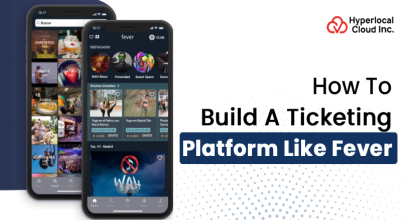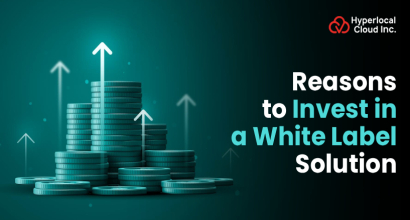More than 80% of people use online platforms to purchase goods. All this is possible with an eCommerce website. An eCommerce website connects buyers and sellers with each other to trade goods & products. Nowadays, online shopping mode has become convenient because it saves time and money by comparing prices across sites digitally, and it is easy to browse through various products without going anywhere.
If you want to run your business from anywhere in the world, you will need an eCommerce website to reach a wider audience. To know more, For more information, continue reading this blog.
Future Of Ecommerce
So, how secure is it to invest in an eCommerce website? Let’s explore it with some stats:
- Ecommerce is expected to grow 22% of the global retail economy in the upcoming years.
- The economic growth in eCommerce is projected to reach $6.15 trillion before the end of 2023.
- It is predicted that the United States of America will have one of the highest eCommerce adoption rates.
Revolutionize Your Business And Build An Ecommerce Website With Hyperlocal Cloud
Benefits Of Building An Ecommerce Website
Having a digital presence for online sellers is beneficial. We have mentioned a few of the benefits that an entrepreneur can avail after opening an online eCommerce website:
Cost-Effective
Where retailers have to pay thousands of dollars for their business setup physically, starting an eCommerce website eliminates this cost by providing digital inventory, product listing, and custom store design. Generally, physical stores are not that capable of targeting profitability and ROI. It requires significant investment, in-store setup, warehouse construction, maintenance, etc. Compared to a physical store, an eCommerce website is cost-effective and provides an excellent option to reach broad customers and generate sales.
Scalability
An eCommerce website for your business helps you monitor, track sales, and maintain stock levels. This analysis helps you create new strategies according to customer interest, rising demand, and other business aspects. Thus, it can help you expand your product line across industries.
Build Customer Trust
There is no doubt that a beautifully designed eCommerce website can attract customers. That’s why you should create a strategy accordingly and provide an information-rich and well-crafted website. It is a psychological strategy because a customer can assume the quality of your services by the design and look of your eCommerce website.
Global Reach
Unlike a physical store, building an eCommerce website offers no boundaries for sales. It allows you to sell, market, and reach global customers. As a result, it increases sales, enhances the customer base, and supports your business.
How To Build An Ecommerce Website?
Building an eCommerce website requires a lot of research. Your vision and goal needs to be clear. So now let’s explore how to build your eCommerce website from scratch:
Select A Content Management System (CMS)
Having a CMS in your business is necessary. It will help you to edit, create, and publish content on your website without writing any code. It doesn’t demand any technical expertise. So, you should choose a reliable CMS before starting anything. Here are some popular CMS that can help:
- WordPress- It is an open-source CMS that allows anyone to build & create websites. It was primarily built as a blogging platform, but later it has also evolved for web content management.
- Shopify- It allows enterprises to build their online presence and sell products on any third-party marketplace. As a cloud-based platform, it offers various services like web hosting, shipping, and payment processing.
- Square Online- It supports online platforms with built-in inventory management, a point-of-sale system, and has the ability to accept payments online. Like other CMSs, it doesn’t require any coding knowledge to start.
- Wix- It is an all-in-one CMS platform with 500+ templates to create a website. Its drag-and-drop tool helps create a website & online marketplaces swiftly.
Create An Account
After choosing your CMS, it is important to create an account. To complete account creation, you must add your email, name, and password. This account will later be used to purchase domains. You will also be availing awesome domains and SSL certificates with this account.
Choose An Ecommerce Business Model
Now, you need to decide your target audience or know the people you will connect with. To do this, you need a business model to determine the workflow. Here are some business models to consider:
Business-To-Customer (B2C)- The B2C model lets businesses sell their products directly to customers without intermediaries.
Business-To-Business (B2B)- A B2B model involves a company selling, renting, or leasing its products to other businesses, rather than individual consumers.
Customer-To-Customer (C2C)- The consumer-to-consumer (C2C) business model involves third-party organizations facilitating transactions between consumers without any corporation participating.
Dropshipping- Dropshipping is a popular eCommerce business model that enables retailers to sell products without having to maintain inventory. In this model, the retailer sells the product to the customer and then transfers the order to a third-party supplier, such as a wholesaler or manufacturer. The supplier then ships the order straight to the customer.
White Label- The white label business model involves a manufacturer producing a product without any branding, which is then sold to resellers who can rebrand and sell it under their own name. These resellers may include established retailers who can offer the product at a competitive price.
Private Label- A private label is a business model where one company produces a product to be sold under another company's brand. The private label seller handles the product's design, marketing, and pricing while the manufacturer takes care of production, ensuring quality control.
Select An Ecommerce Theme And Template
After deciding on your business model, it is time to choose a theme. Themes are a ready-made template, also known as a website's foundation. Every platform has hundreds of templates to choose from. Remember, while various platforms offer free website templates, there could be some paid templates, too. The benefit of a paid template is that you will attain a unique design for your marketplace.
Start Customization
It’s time to implement the chosen template and customize it the way you want. Try adding different styles, colors, fonts, images, and more to enhance the customer’s experience. You can also hire a web developer to build your website. Here are some elements to consider while customizing your website:
- Homepage- Introductory page of your website that can be customized with images, CTAs, product videos, navigation menus, and many more.
- Category Pages- Arrange products based on their categories by adding product links, specific names, filters, etc.
- Cart- It is where users can create collections of their favorite products with a wishlist, checkout, accumulative price, and payment options.
- Checkout Page- You can associate a progress indicator, order summary, and easy payment options in this section.
- About Us- Here, you can add unique value proportions and information about how your company benefits users.
- Contact Information- Consists of information like contact number, location, and email address.
- Search Bar- Customize it in a way so that users can search for a product by specifying the title and by location. It can also be built with a filter button beside it.
Test & Launch Your Ecommerce Website
Conduct a thorough testing before launching your eCommerce marketplace to make it accessible to your customers. Try to ensure that every button is working properly, mobile friend, and you are matching your development goals.
Build An Ecommerce Website And Reach Customers Beyond The Boundaries
How Much Does It Cost To Build An Ecommerce Website?
To get a full-cycle eCommerce website, it can cost around $8,000 - $35,000. Please note the mentioned amount can rise and fall depending on various development factors. Here, we have mentioned some factors that can affect the development cost:
- Language Version
- Integration with any third-party site and organization
- Paid templates
- Additional features
- Custom UI design
- Tech stacks
- Payment gateway integration
Conclusion
A good eCommerce website is not just a digital platform; it explains everything about your business. After following the steps mentioned above, you can build an eCommerce website independently. If you are still confused about how to build an eCommerce website, you can hire an eCommerce website development company. Choosing the right eCommerce website for your business can give you lots of business benefits.



